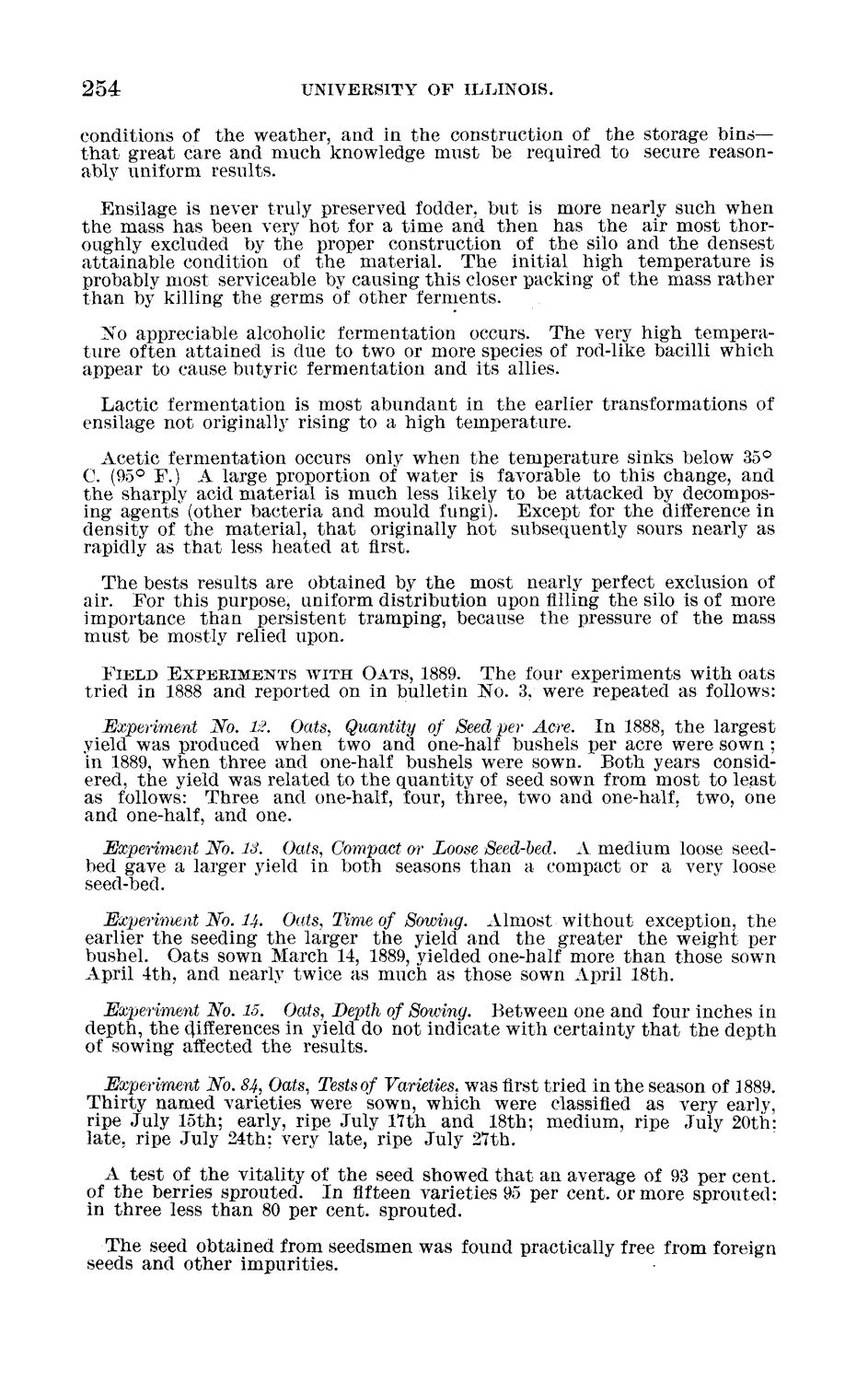| |
| |
Caption: Board of Trustees Minutes - 1890
This is a reduced-resolution page image for fast online browsing.

EXTRACTED TEXT FROM PAGE:
254 UNIVERSITY O F ILLINOIS. conditions of t h e weather, and in t h e construction of t h e storage bins— t h a t great care and much knowledge must be required to secure reasonably uniform results. Ensilage is never truly preserved fodder, but is more nearly such when the mass has been very hot for a time and then has t h e air most thoroughly excluded by t h e proper construction of t h e silo and t h e densest attainable condition of t h e material. The initial high temperature is probably most serviceable by causing this closer packing of t h e mass rather than by killing the germs of other ferments. No appreciable alcoholic fermentation occurs. The very high temperature often attained is due to two or more species of rod-like bacilli which appear to cause butyric fermentation and its allies. Lactic fermentation is most abundant in the earlier transformations of ensilage not originally rising to a high temperature. Acetic fermentation occurs only when the temperature sinks below 35° C. (95° F.) A large proportion of water is favorable to this change, and the sharply acid material is much less likely to be attacked by decomposing agents (other bacteria and mould fungi). Except for t h e difference in density of the material, t h a t originally hot subseqviently sours nearly as rapidly as t h a t less heated at first. The bests results are obtained by t h e most nearly perfect exclusion of air. For this purpose, uniform distribution upon rilling the silo is of more importance than persistent tramping, because the pressure of t h e mass must be mostly relied upon. F I E L D E X P E R I M E N T S WITH OATS, 1889. The four experiments with oats tried in 1888 and reported on in bulletin No. 3, were repeated as follows: Experiment No. 12. Oats, Quantity of Seed per Acre. I n 1888, t h e largest yield was produced when two and one-half bushels per acre were sown ; in 1889, when three and one-half bushels were sown. Both years considered, t h e yield was related to the quantity of seed sown from most to least as follows: Three and one-half, four, three, two and one-half, two, one and one-half, and one. Experiment No. IS. Oats, Compact or Loose Seed-bed. A medium loose seedbed gave a larger yield in both seasons than a compact or a very loose seed-bed. Experiment No. 14. Oats, Time of Sowing. Almost-without exception, the earlier t h e seeding the larger t h e yield and the greater t h e weight per bushel. Oats sown March 14, 1889, yielded one-half more than those sown April 4th, and nearly twice as much as those sown April 18th. Experiment No. 15. Oats, Depth of Sowing. Between one and four inches in depth, the differences in yield do not indicate with certainty t h a t the depth of sowing affected t h e results. Experiment No. 84, Oats, Tests of Varieties, was first tried in the season of 1889. Thirty named varieties were sown, which were classified as very early, ripe July 15th; early, ripe July 17th and 18th; medium, ripe July 20th: late, ripe July 24th; very late, ripe July 27th. A test of t h e vitality of the seed showed t h a t an average of 93 per cent, of t h e berries sprouted. I n fifteen varieties 95 per cent, or more sprouted: in three less than 80 per cent, sprouted. The seed obtained from seedsmen was found practically free from foreign seeds and other impurities.
| |